- Care Tips for Ampel Pelargonium
- Varieties of Ampel Pelargonium
- 1. Cascade Beauty
- 2. Pink Cascade
- 3. Balcon Beauty
- 4. Ivy-leafed
- Growing Guide for Ampel Pelargonium
- Light and Temperature
- Watering
- Fertilization
- Pruning and Pinching
- Pest and Disease Control
- Varieties
- Container Growing
- Conclusion
- Watering and Fertilizing Ampel Pelargonium
- Watering
- Fertilizing
- Common Diseases and Pests of Ampel Pelargonium
- Diseases
- Pests
- Prevention and Control
- Pruning and Propagation of Ampel Pelargonium
- Harvesting and Using Ampel Pelargonium
- Harvesting the Flowers
- Using the Flowers
- Harvesting Leaves and Stems
- Using the Leaves and Stems
- Tips for Overwintering Ampel Pelargonium
- Q&A:
- What are the care tips for Ampel Pelargonium?
- How often should I water Ampel Pelargonium?
- What type of soil is best for Ampel Pelargonium?
- How often should I fertilize Ampel Pelargonium?
- What are some common varieties of Ampel Pelargonium?
- Can Ampel Pelargonium be grown indoors?
- How do I propagate Ampel Pelargonium?
- Video: You Can Grow It: Tips for growing geraniums
If you’re looking to add a touch of elegance and charm to your garden or balcony, look no further than the ampel pelargonium. This versatile and beautiful flowering plant is a member of the geranium family and is known for its cascading growth habit and stunning flowers. With a little care and attention, you can enjoy a lush and vibrant display of color all summer long.
Ampel pelargoniums come in a wide variety of colors and flower shapes, ranging from delicate pastels to vibrant reds and purples. Some popular varieties include the Ivy-leafed Pelargonium, which has trailing stems and ivy-shaped leaves, and the Angel Pelargonium, which features large, showy flowers. You can choose a variety that complements your existing garden colors or create a striking contrast with a bold and unusual hue.
When it comes to caring for ampel pelargoniums, there are a few key tips to keep in mind. First, they prefer a sunny location with well-draining soil. Make sure to water them regularly, but be careful not to overwater as this can lead to root rot. As they are fast-growing plants, it’s important to provide them with ample space to spread out their trailing stems. Pruning is also essential to maintain their shape and promote healthy growth.
Whether you’re a seasoned gardener or just starting out, ampel pelargoniums are a stunning addition to any outdoor space. With their cascading growth habit and vibrant flowers, they are sure to delight and impress. Follow these care tips and explore the various varieties available to create a show-stopping display that will be the envy of your neighbors.
Care Tips for Ampel Pelargonium
- Light: Ampel Pelargoniums require full sun to partial shade. They thrive in bright locations with at least 6 hours of direct sunlight. Place them near a south-facing window or in a sunny spot in your garden.
- Water: These plants prefer to be kept slightly dry, so be careful not to overwater them. Allow the top inch of soil to dry out before watering again. Water the plants deeply, ensuring that the water reaches the roots. Avoid wetting the leaves to prevent diseases.
- Soil: Use a well-draining soil mix that is specifically formulated for container plants. The soil should be slightly acidic with a pH level of 6.0 to 6.5. You can also amend the soil with compost or organic matter to improve its fertility and drainage.
- Fertilizer: Ampel Pelargoniums benefit from regular fertilization to promote healthy growth and flowering. Use a balanced liquid fertilizer that is high in phosphorus, such as a 10-10-10 or 5-10-5 formula. Apply the fertilizer every 2 to 3 weeks during the growing season according to the package instructions.
- Pruning: To maintain a compact and bushy appearance, you can pinch back the tips of the plant regularly. This will encourage branching and promote more blooms. You can also remove any dead or faded flowers to keep the plant looking tidy.
- Pest and Disease Control: Inspect your plants regularly for signs of pests, such as aphids or spider mites. If you notice any infestations, treat the plants with an appropriate insecticide or use natural methods, such as spraying with a mixture of water and soap. Avoid overwatering and provide good air circulation to prevent diseases like leaf spot or gray mold.
- Overwintering: In areas with frost, ampel pelargoniums are not frost-tolerant and should be brought indoors before winter. You can keep them in a cool and bright location, such as a basement or a heated greenhouse. Reduce watering during the winter months, but do not let the soil dry out completely.
Varieties of Ampel Pelargonium
There are several varieties of ampel pelargonium, each with its own unique characteristics and growth habits. Here are a few popular varieties:
1. Cascade Beauty
- This variety has beautiful cascading foliage and vibrant, semi-double flowers.
- The flowers come in a range of colors including pink, red, and white.
- It is an excellent choice for hanging baskets and containers.
2. Pink Cascade
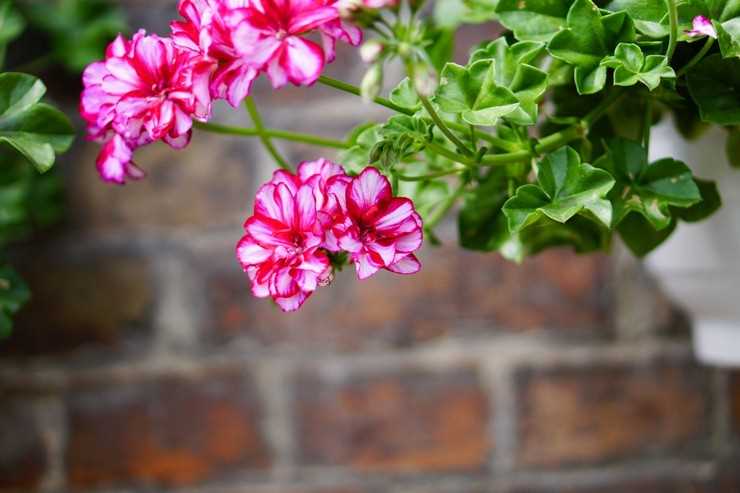
- This variety produces masses of delicate pink flowers that cascade beautifully.
- It has a trailing habit and is perfect for hanging pots and window boxes.
- The foliage is deep green and adds a lush touch to any garden.
3. Balcon Beauty
- This variety is known for its large, showy flowers that come in a variety of colors, including purple, red, and white.
- It has a compact and bushy growth habit, making it ideal for containers and small gardens.
- The foliage is attractive and glossy, adding to its overall appeal.
4. Ivy-leafed
- This variety has trailing stems and small, ivy-like leaves.
- The flowers are single or double and come in a wide range of colors.
- It is well-suited for hanging baskets and containers, as well as adding a touch of elegance to garden borders.
These are just a few examples of the many varieties of ampel pelargonium available. Whether you prefer vibrant cascades of flowers or delicate trailing foliage, there is a variety to suit every taste and garden style.
Growing Guide for Ampel Pelargonium
Ampel Pelargonium, also known as trailing geraniums, are beautiful flowering plants that can add a vibrant touch to any garden or hanging basket. Here are some tips to help you successfully grow and care for ampel pelargoniums:
Light and Temperature
Ampel pelargoniums thrive in full sun to partial shade. They require at least 6 to 8 hours of direct sunlight per day to produce abundant flowers. However, in hotter regions, they may appreciate some shade during the hottest part of the day. They can tolerate moderate temperatures ranging from 55°F (13°C) to 80°F (27°C). It is essential to protect them from frost, as they are not frost-tolerant plants.
Watering
Proper watering is crucial for the health of ampel pelargoniums. They prefer a well-draining soil that retains moisture but does not become waterlogged. Water them when the top inch of soil feels dry, and make sure to water deeply to encourage root growth. Avoid overwatering, as it can lead to root rot.
Fertilization
Ampel pelargoniums benefit from regular fertilization to promote healthy growth and abundant flowering. Use a balanced, water-soluble fertilizer every two weeks during the growing season. Follow the instructions on the fertilizer packaging for the appropriate dosage and application method.
Pruning and Pinching
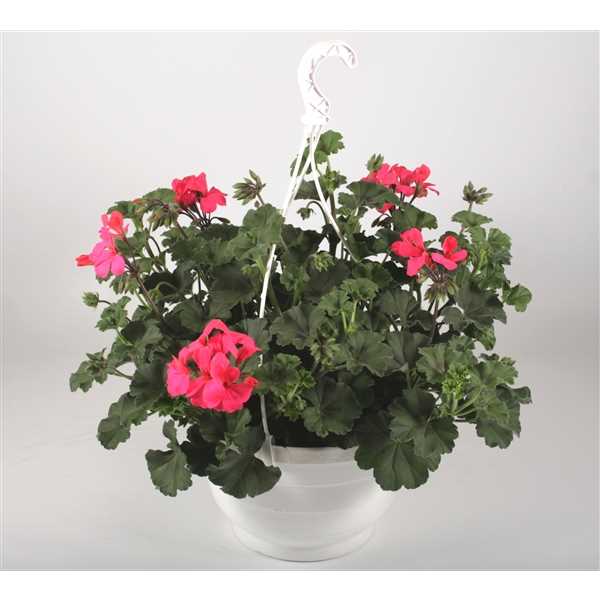
To encourage bushier growth and more flowers, prune ampel pelargoniums regularly. Pinch off the growing tips to encourage branching. Remove spent flowers regularly to promote continuous blooming.
Pest and Disease Control
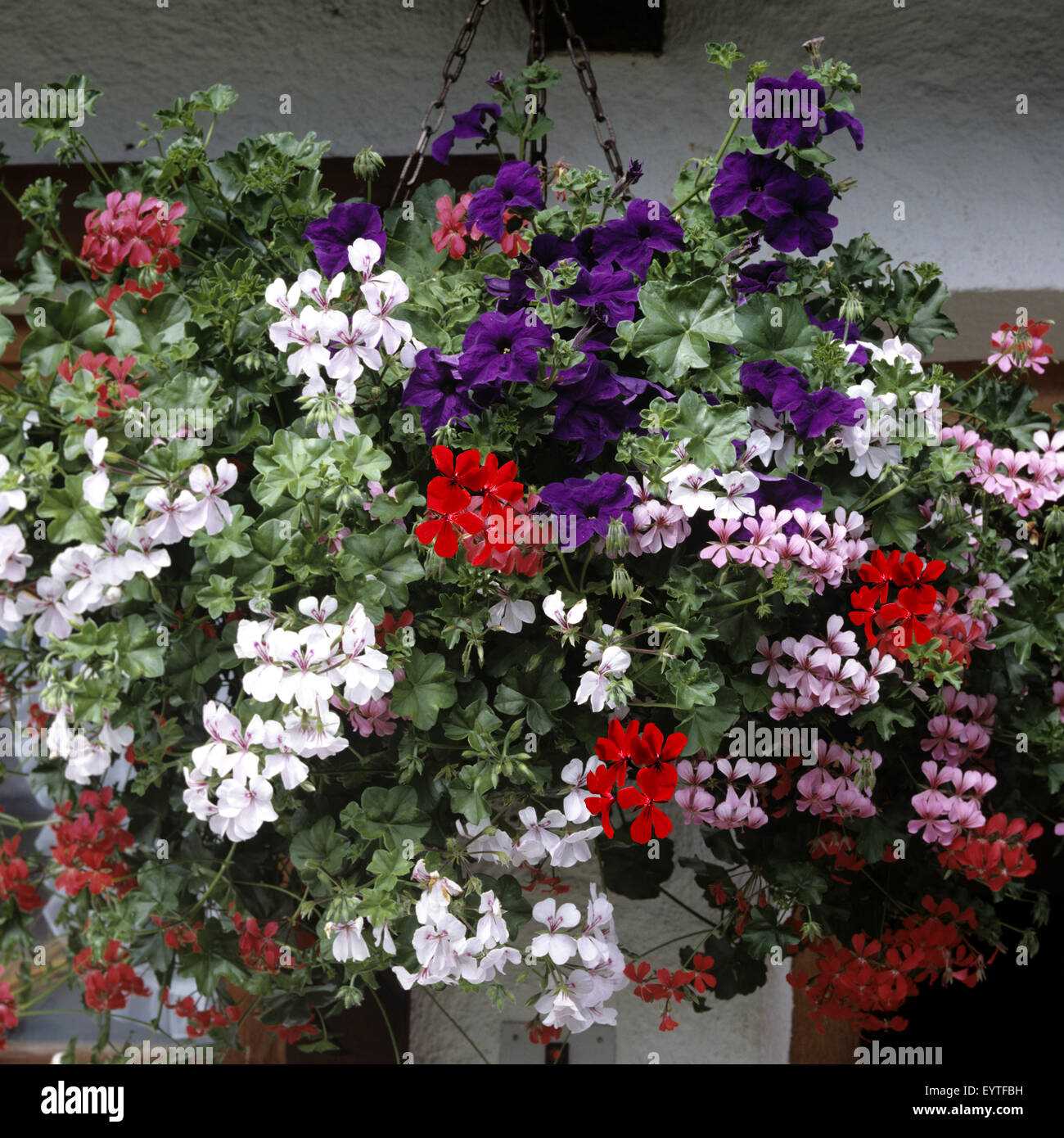
Ampel pelargoniums are relatively resistant to pests and diseases. However, they may occasionally suffer from common garden pests such as aphids and spider mites. Regularly inspect the plants for any signs of infestation, and treat them promptly with appropriate organic or chemical solutions, if necessary.
Varieties
There are various stunning varieties of ampel pelargoniums available, each with its unique flower colors and growth habits. Some popular varieties include ‘Vancouver Centennial’ with bright orange flowers, ‘Cascade’ with cascading pink flowers, and ‘Contessa’ with double red flowers. Choose the variety that suits your aesthetic preferences and growing conditions.
Container Growing
Ampel pelargoniums are well-suited for container gardening and hanging baskets. Use a well-draining potting mix and ensure that the container has adequate drainage holes. Hang the baskets in a location that receives ample sunlight and water them regularly to maintain healthy growth.
Conclusion
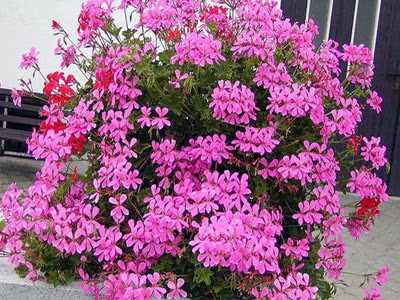
By following these growing tips, you can enjoy the beauty of ampel pelargoniums in your garden or hanging baskets. Their vibrant flowers and trailing habit will be a stunning addition to your outdoor space.
Watering and Fertilizing Ampel Pelargonium
Proper watering and fertilizing are essential for the health and vigor of ampel pelargonium plants. Here are some tips to ensure your plants thrive:
Watering
Ampel pelargonium plants prefer a moderately moist soil, but they do not tolerate soggy conditions. Overwatering can lead to root rot and other problems. Here’s how to water your ampel pelargonium:
- Water the plant thoroughly when the top inch of soil feels dry to the touch.
- Avoid overwatering by ensuring that the excess water drains freely from the pot or container.
- Never allow the plant to sit in standing water, as this can suffocate the roots.
Fertilizing
Ampel pelargonium plants benefit from regular feeding to promote healthy growth and abundant blooms. Here’s how to fertilize your ampel pelargonium:
- Use a balanced liquid fertilizer, such as a 10-10-10 or 20-20-20 formulation, diluted to half the recommended strength.
- Feed your ampel pelargonium every two weeks during the growing season, which is typically from spring to fall.
- Apply the fertilizer to the soil around the base of the plant, taking care not to splash it onto the leaves, as this can cause leaf burn.
- During the winter months, reduce or stop fertilizing as the plant’s growth slows down.
By following these watering and fertilizing tips, you can ensure that your ampel pelargonium plants receive the proper care they need to thrive and produce beautiful, cascading blooms.
Common Diseases and Pests of Ampel Pelargonium
Diseases
- Botrytis blight: This fungal disease causes grayish-brown spots on the leaves and stems. It thrives in moist conditions and can lead to the plant’s decline. Remove infected parts and ensure good air circulation to prevent its spread.
- Root rot: Overwatering can lead to root rot, a condition where the roots become waterlogged and start to decay. Symptoms include wilting, yellowing leaves, and a damp, rotten smell. To prevent root rot, make sure the soil is well-draining and water the plant only when the top layer of soil is dry.
- Leaf spot: Leaf spot is a fungal disease characterized by brown, black, or grayish spots on the leaves. Remove infected leaves and improve air circulation around the plant.
- Powdery mildew: Powdery mildew appears as a white, powdery substance on the leaves, stems, and flowers of the plant. It thrives in high humidity and can be controlled by maintaining proper air circulation and avoiding overhead watering.
Pests
- Spider mites: Spider mites are small, semi-transparent pests that can cause yellowing and stippling on the leaves. They thrive in dry conditions and can be controlled by regularly misting the plant and keeping the humidity high.
- Aphids: Aphids are small insects that suck sap from the plant, causing distorted growth and yellowing. They can be removed by spraying the plant with a strong stream of water or using insecticidal soap.
- Whiteflies: Whiteflies are tiny white insects that can be found on the underside of the leaves. They suck sap from the plant and can be controlled by using sticky traps or insecticidal soap.
- Thrips: Thrips are tiny, slender insects that feed on the plant’s leaves and flowers, causing discoloration and deformation. Control thrips by removing infested leaves and using insecticidal soap.
Prevention and Control
To prevent diseases and pests, it is important to practice good plant hygiene and provide optimal growing conditions. Here are some tips:
- Water the plant properly, allowing the soil to dry out between waterings.
- Avoid over-fertilizing, as this can weaken the plant and attract pests.
- Ensure good air circulation by spacing plants properly and avoiding overcrowding.
- Remove dead or diseased foliage promptly.
- Monitor the plant regularly for signs of diseases or pests and take appropriate action.
- Consider using organic insecticides or fungicides if necessary.
| Disease/Pest | Symptoms | Prevention | Treatment |
|---|---|---|---|
| Botrytis blight | Grayish-brown spots on leaves and stems | Remove infected parts, improve air circulation | Apply fungicide if necessary |
| Root rot | Wilting, yellowing leaves, damp smell | Ensure well-draining soil, avoid overwatering | Improve drainage, remove affected roots |
| Leaf spot | Brown, black, or grayish spots on leaves | Remove infected leaves, improve air circulation | Apply fungicide if necessary |
| Powdery mildew | White, powdery substance on leaves, stems, and flowers | Maintain good air circulation, avoid overhead watering | Apply fungicide if necessary, remove affected parts |
| Spider mites | Yellowing, stippling on leaves | Mist the plant regularly, increase humidity | Use insecticidal soap or miticide |
| Aphids | Distorted growth, yellowing leaves | Remove with water spray, use insecticidal soap | Apply insecticidal soap or use natural predators |
| Whiteflies | Tiny white insects on underside of leaves | Use sticky traps, use insecticidal soap | Apply insecticidal soap or use natural predators |
| Thrips | Discoloration, deformation of leaves and flowers | Remove infested leaves, improve air circulation | Use insecticidal soap or natural predators |
Pruning and Propagation of Ampel Pelargonium
Pruning is an important aspect of ampel pelargonium care as it helps to maintain the plant’s shape and promote new growth. Here are some tips for pruning ampel pelargonium:
- Prune ampel pelargonium during the spring or early summer when the plant is actively growing.
- Start by removing any dead, damaged, or diseased branches or leaves. This will improve the overall health of the plant.
- Trim back overgrown or leggy branches to promote a more compact and bushy growth habit.
- Use sharp and clean pruning shears to make clean cuts just above a leaf node or bud.
- Regularly pinch back the tips of the branches to encourage branching and create a fuller plant.
- After pruning, apply a balanced liquid fertilizer to help the plant recover and promote new growth.
Propagation is another way to expand your collection of ampel pelargonium. There are several methods you can use to propagate ampel pelargonium:
- Softwood cuttings: Take 3-4 inch cuttings from the stem tips, remove the lower leaves, and dip the cut end in rooting hormone. Plant the cuttings in moist potting mix and keep them in a warm and bright location.
- Division: Carefully divide the root ball of a mature ampel pelargonium into multiple sections. Each section should have roots and at least one healthy shoot. Plant the divisions in separate pots and care for them as you would with a mature plant.
- Leaf cuttings: Take a healthy leaf and cut it into sections, ensuring that each section has a vein. Plant the leaf sections in a moist potting mix and keep them in a warm and bright location. New plants will develop from the leaf sections.
- Seeds: Collect ripe seeds from the flowers and plant them in a well-draining potting mix. Keep the soil consistently moist and the seeds should germinate within a couple of weeks.
Propagation can be a rewarding way to produce new ampel pelargonium plants and share them with friends and family. Experiment with different methods and find the one that works best for you.
Harvesting and Using Ampel Pelargonium
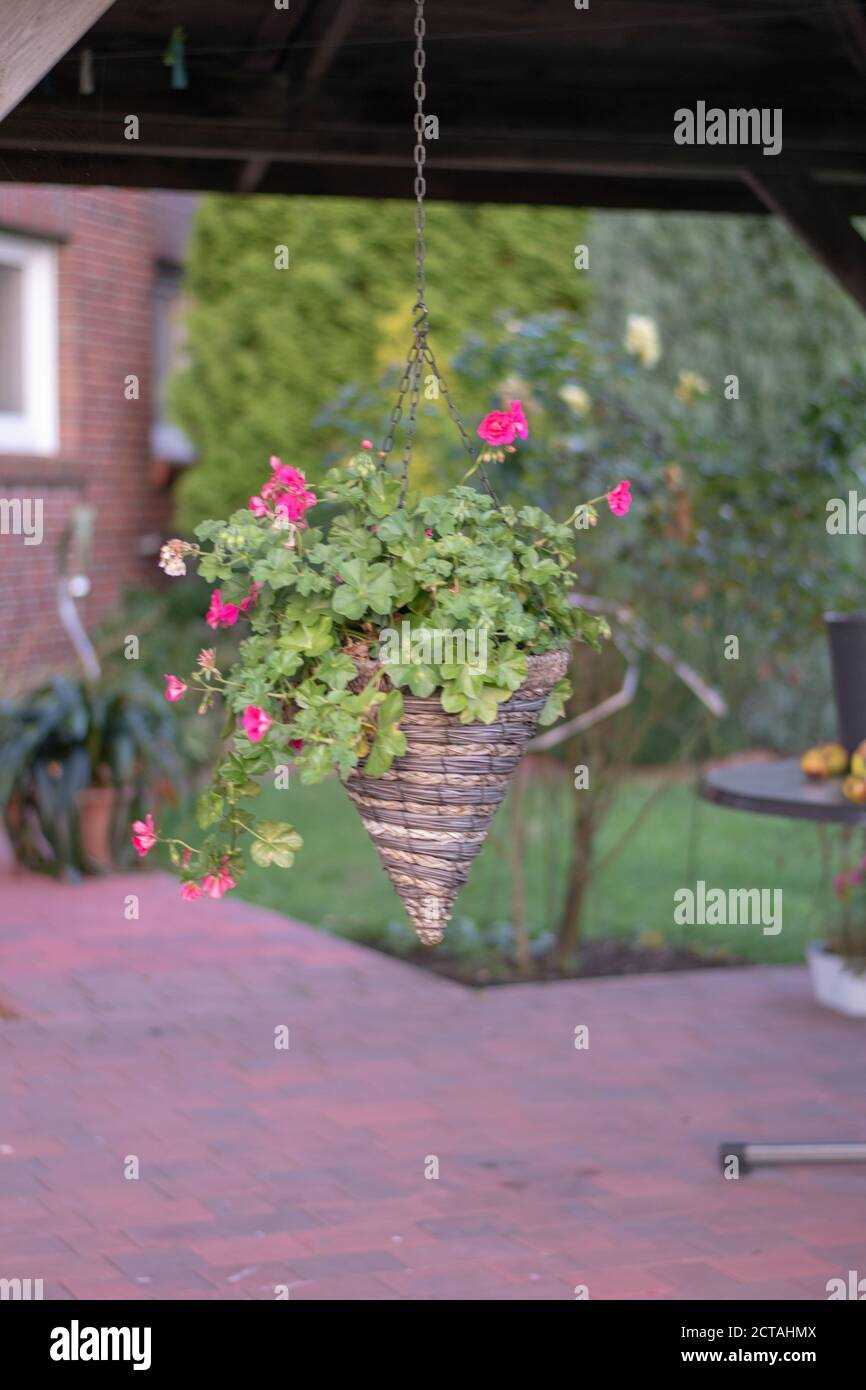
Ampel Pelargonium is not only a beautiful flowering plant but also has several practical uses. Here are some tips on how to harvest and utilize its various parts:
Harvesting the Flowers
To harvest the flowers of Ampel Pelargonium, wait until they are in full bloom. Gently pluck the flowers from the plant, making sure to include the stem. This can be done by using your fingers or a pair of scissors. Avoid damaging the plant while harvesting.
Tip: Harvest the flowers in the morning when the dew has dried off the plant. This will help preserve their freshness for longer.
Using the Flowers
The flowers of Ampel Pelargonium have a delightful fragrance and can be used in a variety of ways:
- Decorative purposes: The vibrant flowers are perfect for adorning bouquets, wreaths, or floral arrangements, adding a pop of color and pleasant scent to any space.
- Herbal tea: The flowers can be dried and used to make a fragrant herbal tea. Simply wash and dry the flowers, then steep them in hot water for a few minutes. The resulting infusion can be enjoyed hot or chilled.
- Flavoring desserts: Ampel Pelargonium flowers have a sweet, floral taste that can enhance desserts like cakes, cookies, and ice cream. Use them as a natural and visually appealing garnish.
Harvesting Leaves and Stems
In addition to the flowers, the leaves and stems of Ampel Pelargonium can also be harvested for various purposes. Here’s how:
- Leaves: Harvest the leaves by gently plucking them from the plant, starting from the bottom and working your way up. The leaves can be used fresh or dried for later use.
- Stems: If you need longer stems for arrangements or crafts, carefully cut them from the plant using a sharp pair of scissors. Make sure to leave enough foliage on the plant for it to continue thriving.
Using the Leaves and Stems
The leaves and stems of Ampel Pelargonium offer a range of possibilities:
- Aromatherapy: Dry the leaves and use them in potpourri or homemade sachets for a natural, floral scent that can freshen up any space.
- Medicinal purposes: Ampel Pelargonium leaves have been used in traditional medicine for their potential antimicrobial and anti-inflammatory properties. Consult a healthcare professional before using them for medicinal purposes.
- Crafts: The leaves and stems can be incorporated into various crafts such as wreaths, pressed flower art, or floral jewelry.
Note: Always harvest Ampel Pelargonium responsibly and avoid excessive pruning, which can harm the plant’s overall health.
By making use of the flowers, leaves, and stems of Ampel Pelargonium, you can appreciate its beauty not only visually but also through its various practical applications.
Tips for Overwintering Ampel Pelargonium
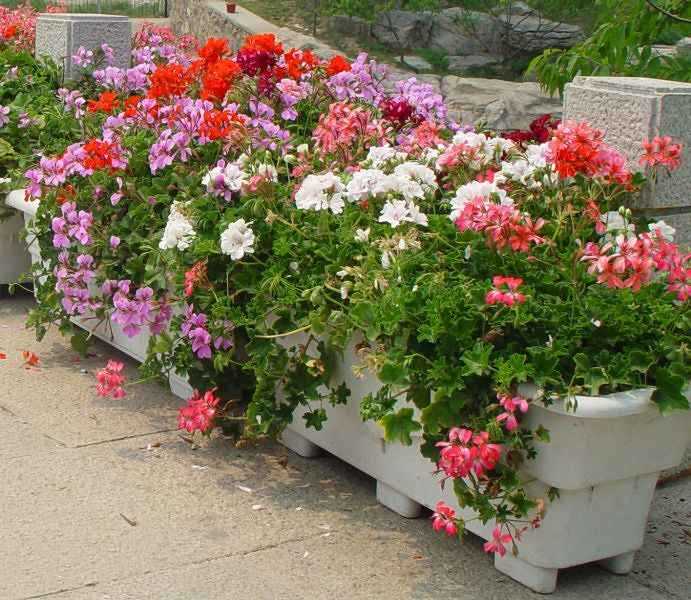
- Choose a suitable location: When overwintering ampel pelargonium, it is important to select a location that offers protection from frost and freezing temperatures. An unheated greenhouse, cold frame, or a bright and cool indoor spot, such as a basement or garage with a window, can provide the necessary conditions for overwintering.
- Prepare the plants: Before bringing ampel pelargonium indoors for the winter, it is important to inspect the plants for any signs of pests or disease. Remove any dead or damaged foliage, and gently prune the plants to a manageable size. Additionally, consider repotting the plants into fresh, well-draining potting soil to promote healthy growth during the winter months.
- Provide the right temperature: Ampel pelargonium plants should be kept in a cool location during the winter months, ideally between 40-55°F (4-13°C). Avoid placing them near heat sources or in areas with temperature fluctuations, as this can stress the plants and inhibit their growth.
- Adjust watering: While ampel pelargonium plants are not actively growing during the winter, they still require some water to survive. Water the plants sparingly, allowing the soil to dry out slightly between waterings. Be sure to check the moisture level of the soil before watering to prevent overwatering, which can lead to root rot.
- Monitor for pests and diseases: During the winter, it is common for pests such as spider mites and mealybugs to infest ampel pelargonium plants, especially when conditions are warm and dry. Regularly inspect the plants for any signs of pests or diseases, and treat them promptly to prevent the spread.
- Limit fertilizer: While ampel pelargonium plants benefit from regular feeding during the growing season, it is best to limit fertilization during the winter. Too much fertilizer can stimulate unwanted growth and make the plants more susceptible to cold damage. If necessary, use a slow-release or balanced fertilizer at a reduced strength.
- Provide occasional sunlight: Ampel pelargonium plants still require some sunlight during the winter months to maintain their overall health. Place them near a window or provide artificial lighting, if necessary, to ensure they receive a few hours of indirect sunlight each day.
By following these tips, you can successfully overwinter your ampel pelargonium plants and enjoy their vibrant flowers year after year.
Q&A:
What are the care tips for Ampel Pelargonium?
Some care tips for Ampel Pelargonium include providing it with well-draining soil, watering it regularly but not excessively, and ensuring it receives plenty of sunlight. It is also important to deadhead the flowers and pinch back the stems to encourage more growth.
How often should I water Ampel Pelargonium?
Ampel Pelargonium should be watered regularly, allowing the top inch of soil to dry out between waterings. It is important not to overwater the plant as it can lead to root rot.
What type of soil is best for Ampel Pelargonium?
Ampel Pelargonium thrives in well-draining soil that is rich in organic matter. A mix of potting soil and perlite or sand is recommended to ensure good drainage.
How often should I fertilize Ampel Pelargonium?
Ampel Pelargonium should be fertilized every two weeks during the growing season with a balanced fertilizer. It is important to follow the instructions on the fertilizer packaging for the proper dosage.
What are some common varieties of Ampel Pelargonium?
Some common varieties of Ampel Pelargonium include ‘Cascade’ with its trailing habit and pink flowers, ‘Vancouver Centennial’ with its red flowers, and ‘Regal Red’ with its dark red flowers. There are also many other varieties available in different colors.
Can Ampel Pelargonium be grown indoors?
Yes, Ampel Pelargonium can be grown indoors as long as it receives enough sunlight. It is important to place it near a sunny window or use artificial grow lights to provide the necessary light for the plant.
How do I propagate Ampel Pelargonium?
Ampel Pelargonium can be propagated through stem cuttings. Take a 4-6 inch cutting from a healthy plant, remove the lower leaves, and dip the cut end in rooting hormone. Plant the cutting in a mixture of potting soil and perlite or sand, keep it moist, and it should root within a few weeks.
Video:
You Can Grow It: Tips for growing geraniums







